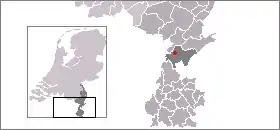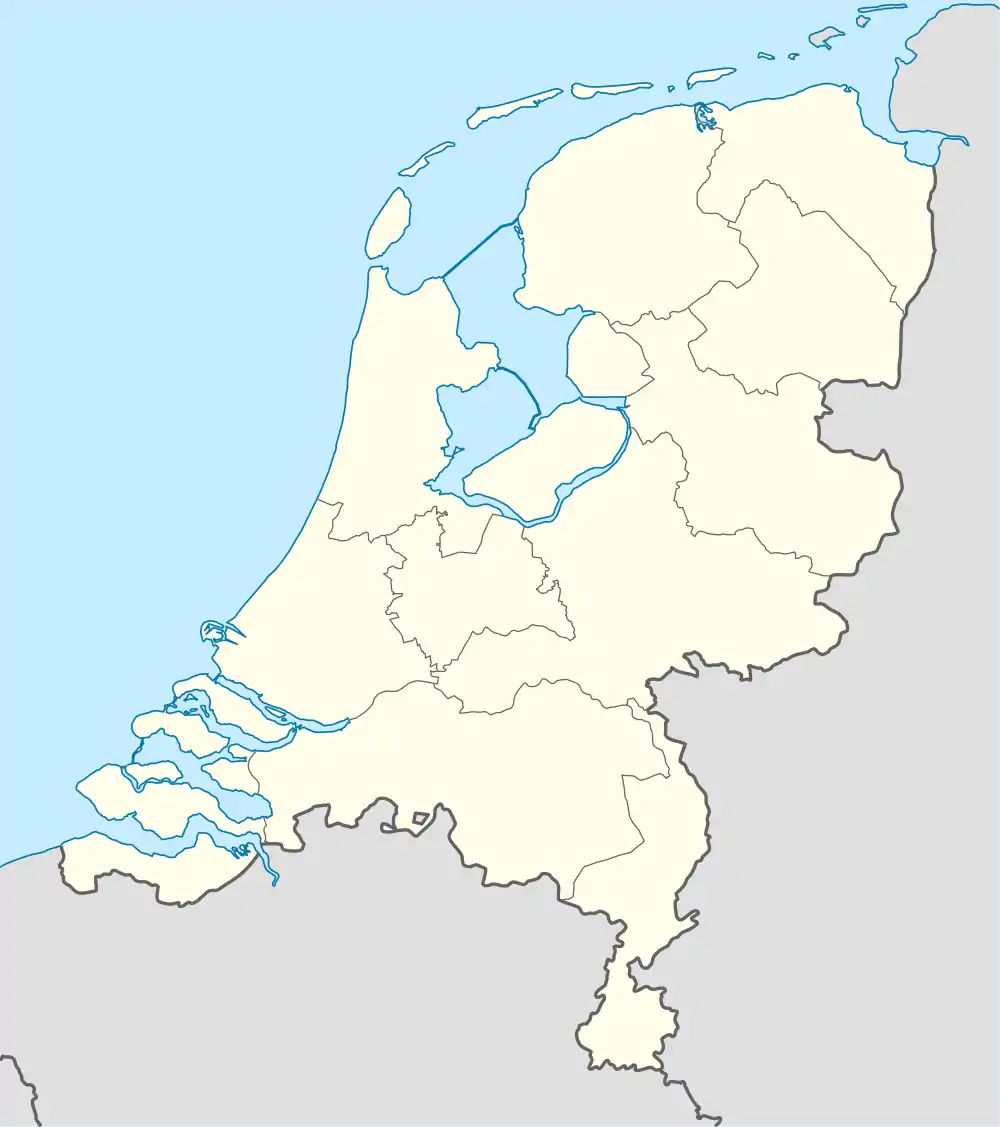Echt, Netherlands
Echt (Limburgish: Ech) is a city in the Dutch municipality of Echt-Susteren in the province of Limburg, Netherlands. It was a municipality itself until it merged with the municipality of Susteren on January 1, 2003.
Echt
Ech (in Limburgish) | |
|---|---|
City | |
 The Sint-Landricuskerk | |
 Flag .svg.png.webp) Coat of arms | |
 | |
 Echt Location in the Netherlands | |
| Coordinates: 51°06′N 5°53′E | |
| Country | |
| Province | |
| Municipality | |
| Area (2006) | |
| • Total | 75.13 km2 (29.01 sq mi) |
| Population (1 January 2008) | |
| • Total | 7,757 |
| Time zone | UTC+1 (CET) |
| • Summer (DST) | UTC+2 (CEST) |
The municipality of Echt had about 19,300 inhabitants and an area of about 75,13 square km.
History
First recorded in the 7th century, Echt was a village, then within the County of Loon. Between 928 and 939 Gerberga of Saxony gave the estate of "Ettha" and its church to the St Servatius community in Maastricht.[1]
In 1075/1076 Gerard I of Guelders, received the estate of Echt on loan from Albert III, Count of Namur and deputy duke of Lower Lorraine.[2][1] However, a charter from Emperor Henry IV from 1087 gives a different picture of this donation: according to the Godschalk van Aken, Gerard I of Guelders is said to have illegally taken possession of the church of Echt ("Echta") ("invaserat"), while this belonged to the St. Servatius Chapter. By judgment of the imperial court of Aachen ("Aquisgrani") the church of Echt was returned to the Maastricht chapter.[2][1]
A source from 1590 shows Echt as a "Minderstädteof" (small town) within the States of Upper Guelders.[3] Small towns were legally and economically less privileged than large cities such as Roermond.[4] Nevertheless, it had a wall with gates, a hospital and cloth hall. A city moat was constructed after the second half of the 13th century. After significant depopulation caused by wars and plagues, Echt was usually considered to be a village. Only after 1630 was it again consistently referred to as city, even by its own aldermen.
At the Treaty of Utrecht, ending the War of the Spanish Succession in 1713, Echt became part of the United Provinces together with Venlo and Montfort. In 1795 Guelders was finally conquered and incorporated by the French First Republic, and partitioned between the départements of Roer and Meuse-Inférieure
Sights
- Sint-Landricuskerk; a Catholic hall church in gothic style.
Economy
From the late 19th century, Echt was the centre of an important roof tile industry.
There are two business parks in Echt, namely De Berk, and De Loop.
Nature and landscape
Echt is located on the Maas river, at a height of about 28 meters. To the west of Echt are industrial estates, a motorway and the Juliana Canal. To the east, the hamlet of Schilberg and the church village of Pey are attached to Echt. Other nearby hamlets include Gebroek, Slek and Ophoven to the south, Aasterberg to the west, and Berkelaar to the north.
Transportation
- Echt is near the A2 and A73 highways.
- Echt railway station is served by NS: Dutch Railways (Dutch: Nederlandse Spoorwegen)
- Echt has its own quay on the Juliana Canal.
See also
References
- "REGESTEN" (PDF). Archived from the original (PDF) on 2016-03-05. Retrieved 2020-09-04.
- Alberts (1978). Van heerlijkheid tot landsheerlijkheid. pp. 48–9.
- Schaïk, R.W.M. van (1989-01-01). "S. Frankewitz, G. Venner, De zegels der steden en dorpen in het Overkwartier van Gelder. Die Siegel der Städte und Dörfer im geldrischen Oberquartier 1250-1798". BMGN - Low Countries Historical Review. 104 (3): 419. doi:10.18352/bmgn-lchr.3119. ISSN 2211-2898.
- Alberts (1978). Van heerlijkheid tot landsheerlijkheid. pp. 65–66.
External links
![]() Media related to Echt, Limburg at Wikimedia Commons
Media related to Echt, Limburg at Wikimedia Commons